The Olympus OM 100mm 1:2.8 is a tiny lens and yet a solid performer. In this shorter review I give you my impressions.
Specifications
| Diameter | 60 mm |
| Length | 50 mm |
| Filter Thread | 49 mm |
| Weight | 230 g |
| Max. Magnification | 0.12 |
| Close Focusing Distance from the sensor | 1 m |
| Number of aperture blades | 6 |
| Elements/ Groups | 5/5 |
In Germany you can buy it used for around 90€ at ebay.de (affiliate link).
Image Samples
Just click on any image to get to the full resolution version.
What I like about it
With this review I try a little different format, any feedback on it is welcome.
The small size
This lens is absolutely tiny for a 100 mm lens! It is the size of your average 50 mm lens and weights a mere 230 g .
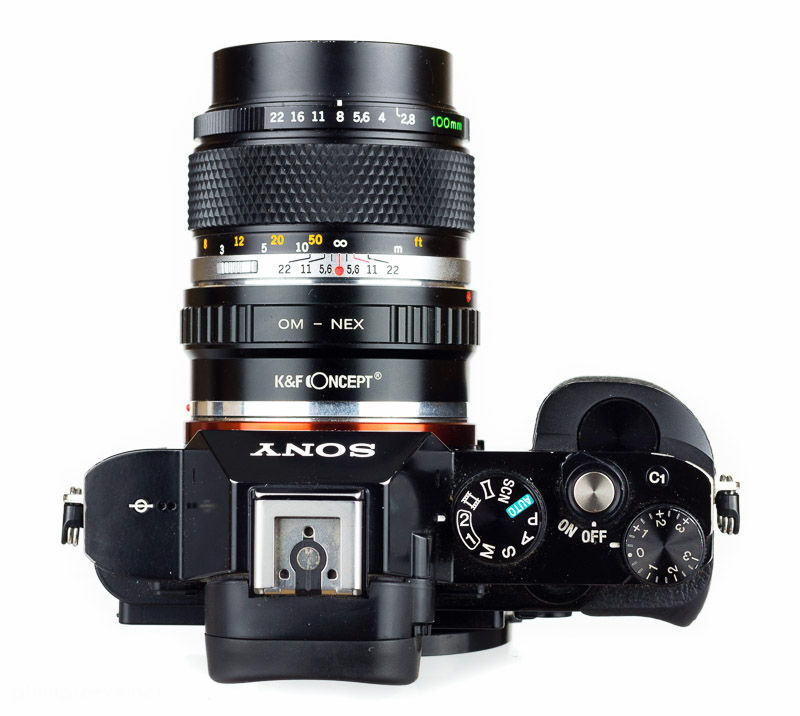
This doesn’t come at the cost of lower build quality though, it is an all metal construction with a pleasant focusing ring and it feels very solid.
Despite it’s small size handling is good: The focusing ring is wide enough and the aperture ring at the front is easy to operate as well.
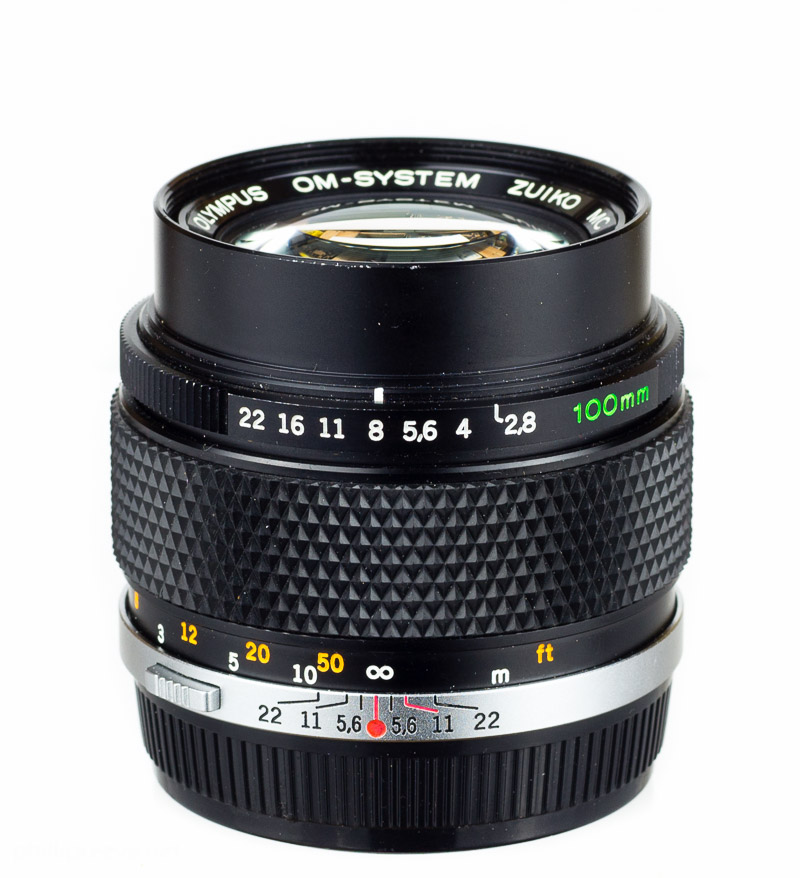
The Olympus is one of my favorite lenses for shorter trips when I want a light 3 lens setup and it is by some margin my lightest and smallest option in the 85-100mm bracket.
Bokeh
The Olympus OM 2.8/100’s bokeh isn’t as stunning as that of it’s bigger brother the OM 2/100 but still quite pleasant and you still get a decent amount of blur out of it.
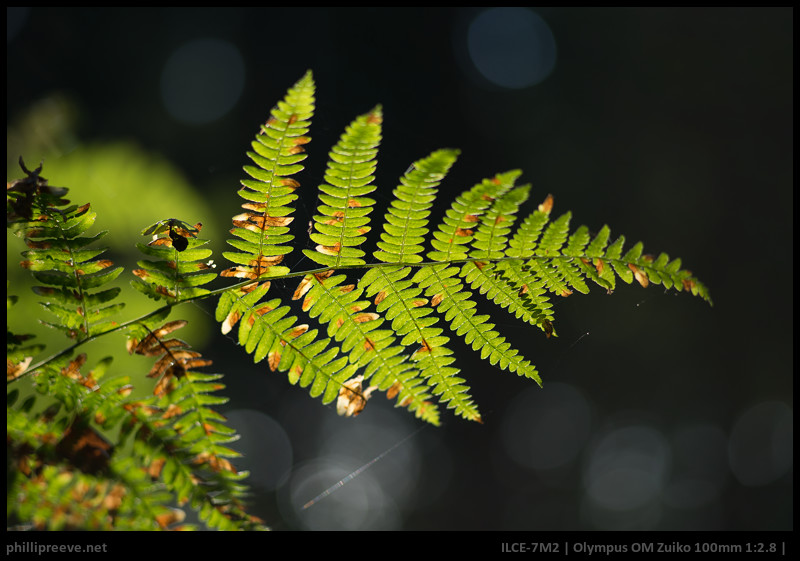
A minor annoyance is that it has only 6 rather straight aperture blades which are detrimental to the bokeh from f/ but since I usually use it at f/2.8 that isn’t much of an issue.
Sharpness
Again the little Zuiko isn’t the sharpest lens around but it is a solid performer. Wide open it is sharp enough for almost any application and for general shooting it is my default aperture. For the very best results across the frame you should stop down to f/8 though.
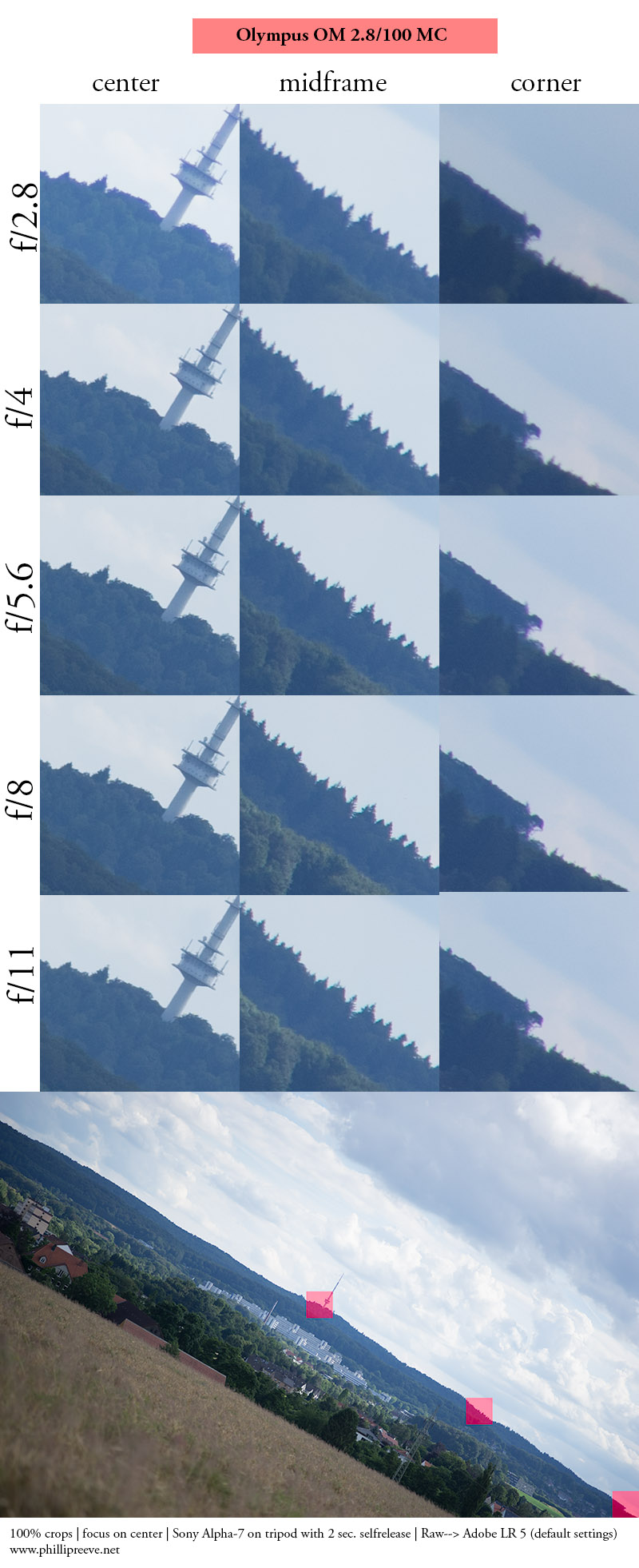
Flare resistance
This lens is still 30 old but at least the MC version I own shows a decent flare resistance. There is no ghosting and only a moderate degree of veiling flare in very demanding situations.
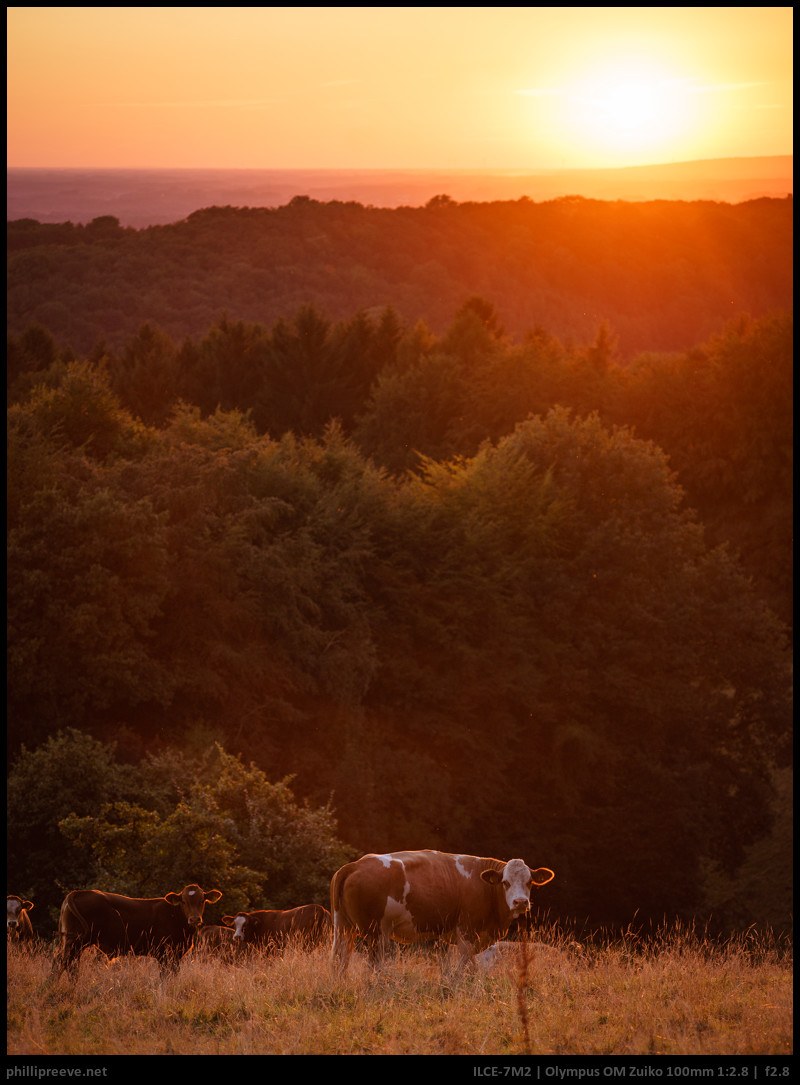
Other aspects
Distortion and Vignetting are not an issue with the Olympus OM 2.8/100
What I don’t like about it
Chromatic Aberrations
Typically for a lens in this focal range the Olympus OM 100 mm 1:2.8 shows quite a bit of CA at wider apertures. This is a worst case scenario and if you have a look at all the other samples you will see that it usually isn’t a problem but you should be aware of this and avoid critical situations.

The long short focusing distance
The Zuiko 2.8/100 only focuses down to 1 m which yields a 1:8 magnification which is below average for a 85/100 mm lens. It’s bigger brother for example focuses down to 0.7 m which is quite handy.
The good news is that there is hardly any sharpness loss at this distance and you can use it wide open without hesitation.
Alternatives
- Olympus OM 100mm 1:2: It’s bigger brother is more than twice as heavy and many times as expensive. It is also one of my all-time favorite lenses. Optically it is a little sharper at f/2 than the f/2.8 version is at f/2.8 with less corner falloff. It also has a number of features like 9 (vs 6) aperture blades, floating elements and a short focusing distance of 0.7 m (vs 1 m) the 2.8 version lacks.
- Zeiss C/Y 3.5/100: The slower Zeiss weights a little more (but needs an smaller adapter) and costs significantly more but it offers better sharpness and more effective coatings making it an attractive option for those who are interested mainly in landscape photography. One of Jannik’s favorite lenses.
- Minolta MC 2.5/100: It plays in the same price league and has an even longer mfd of 1.2 m. Since it is quite a bit older the coatings are less effective and it flares much more easily and contrast especially wide open is a bit lower but I think its bokeh is a bit nicer and I prefer it for portraits.
- Zeiss Makro Planar 2/100: Whereas the Olympus is optimized for size and a solid but not in any way exceptional performer the Zeiss is it’s antithesis: It is large, expensive and an exceptional performer. Sadly though it shares the Olympus’ CA issues.
- Tokina 2.5/90 Macro: One of my all time favorite manual lenses. It is significantly larger and more expensive than the Olympus but it has less CA, even better bokeh and it is quite a bit sharper.
Conclusion
The Olympus OM 2.8/100 is a tiny lens with a generally good performance and few limitations. I think it is a great choice for those occasions when you don’t want to carry a heavy bag. Despite these positive characteristics, the lens is quite affordable and I think it offers great value.
The Olympus OM 2.8/100 usually sells for around $90 used at ebay.com (affiliate link).
In Germany you can buy it used for around 90€ at ebay.de (affiliate link).
If this review was helpful to you, please consider using one of my affiliate links. Thanks ?
Images Samples in full resolution
You can find more images in this flickr set: Olympus OM 100mm 1:2.8
Other articles
- The Guide to Canon FD lenses in the digital age
- Affordable manual lenses for the Sony Alpha 7
- User-Guide to wide-angle lenses for Sony a7
This site contains affiliate links. If you make a purchase using any of the links marked as affiliate links, I may receive a small commission at no additional cost to you. This helps support the creation of future content.
Latest posts by Phillip Reeve (see all)
- Review: Samyang AF 75/1.8 FE - April 12, 2021
- The FE-List now has 113 lenses on it - March 25, 2021
- 2020 – Year’s end review - December 28, 2020
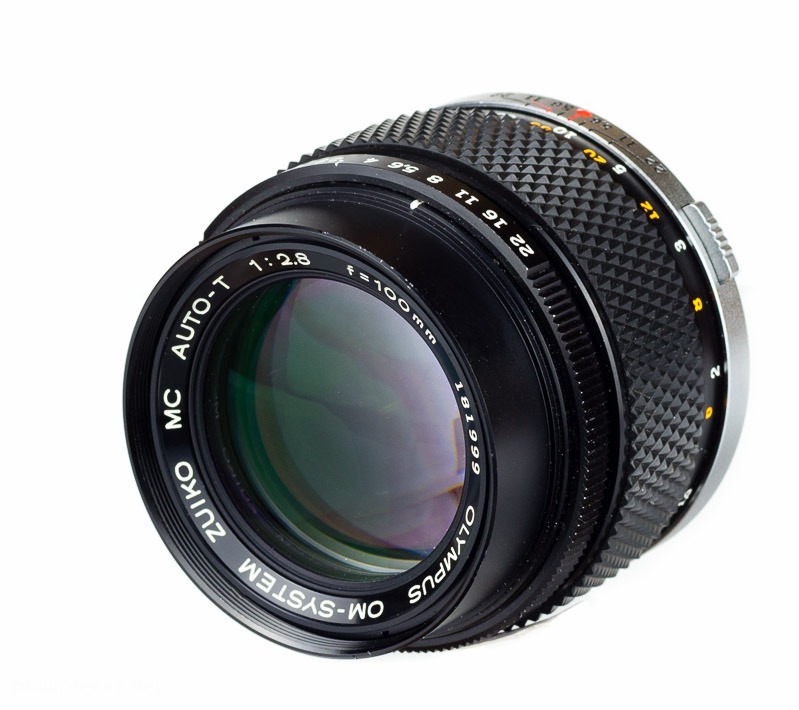
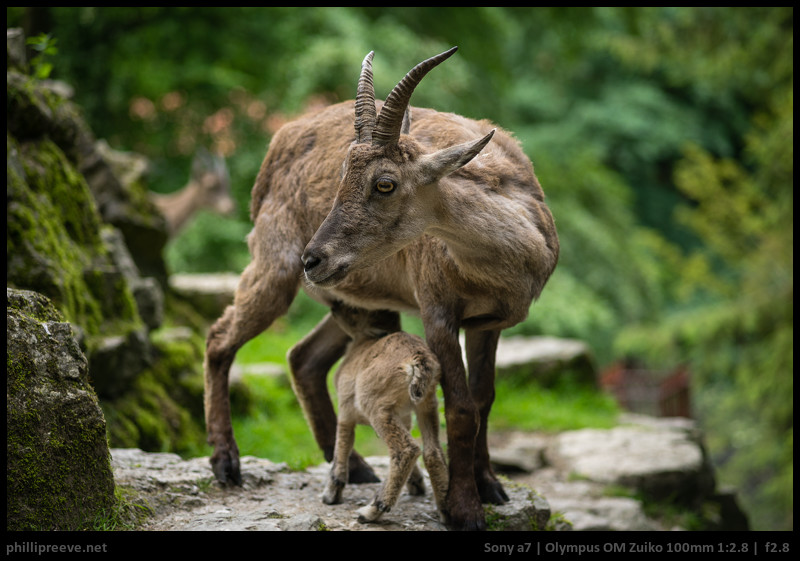
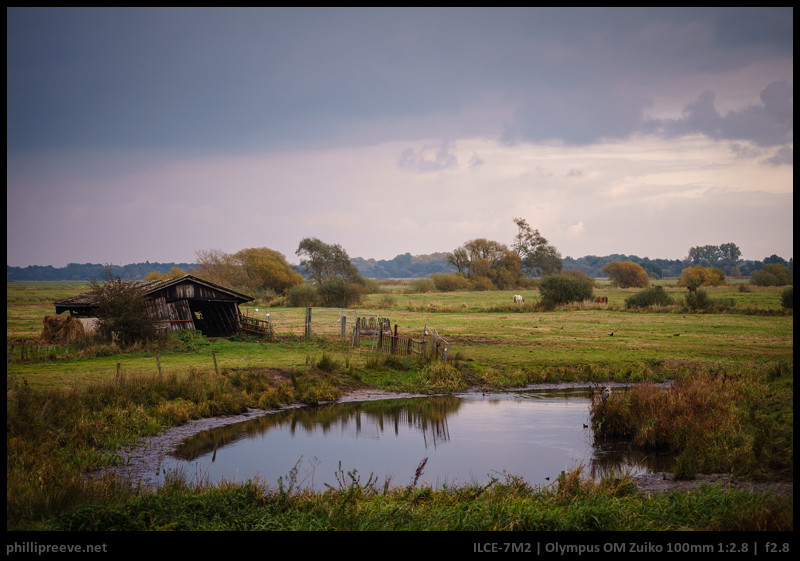
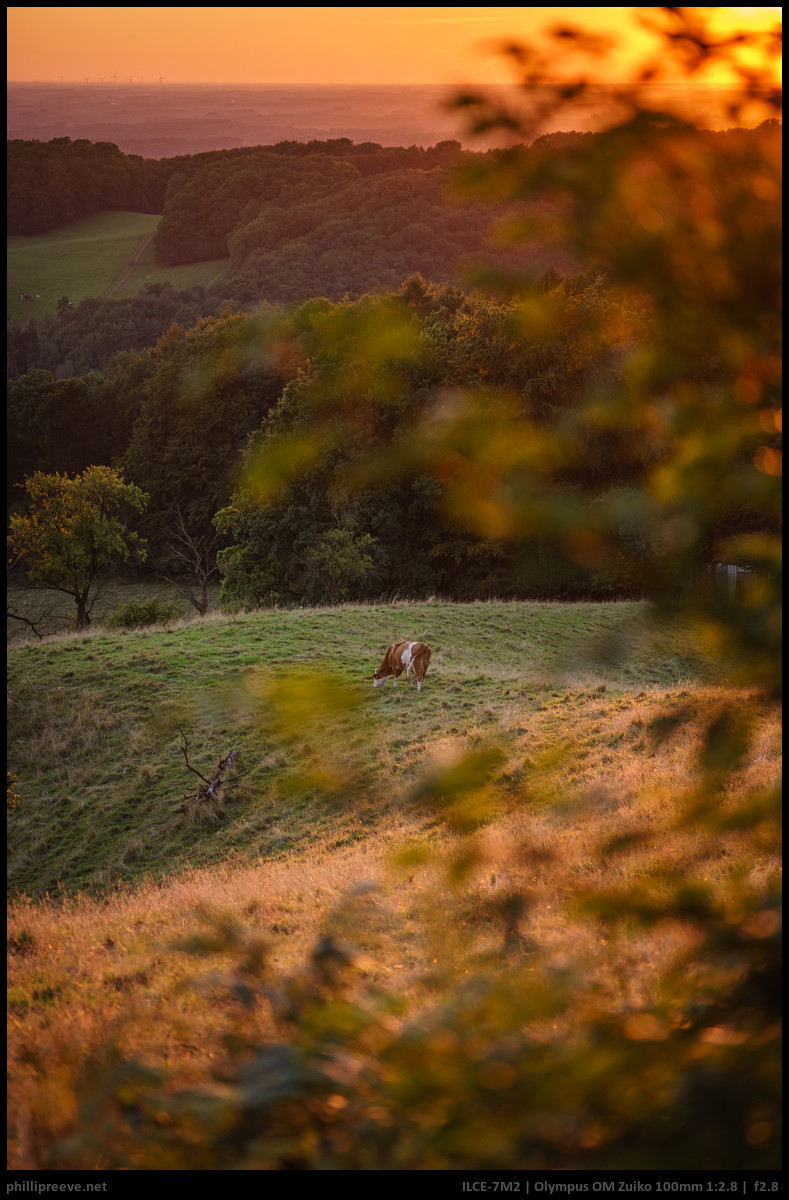
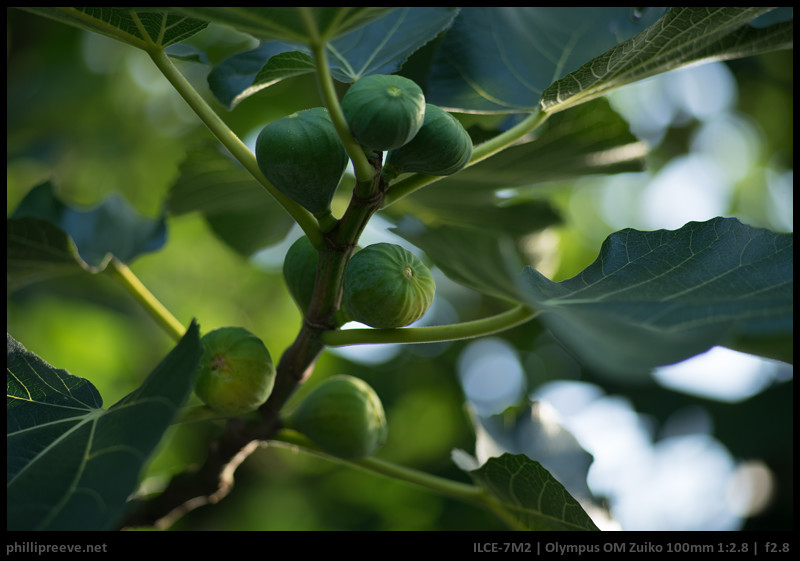
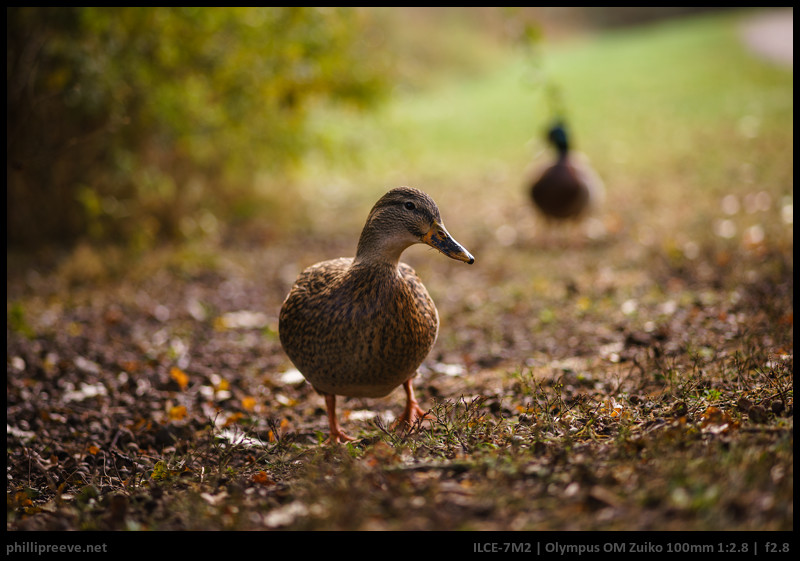

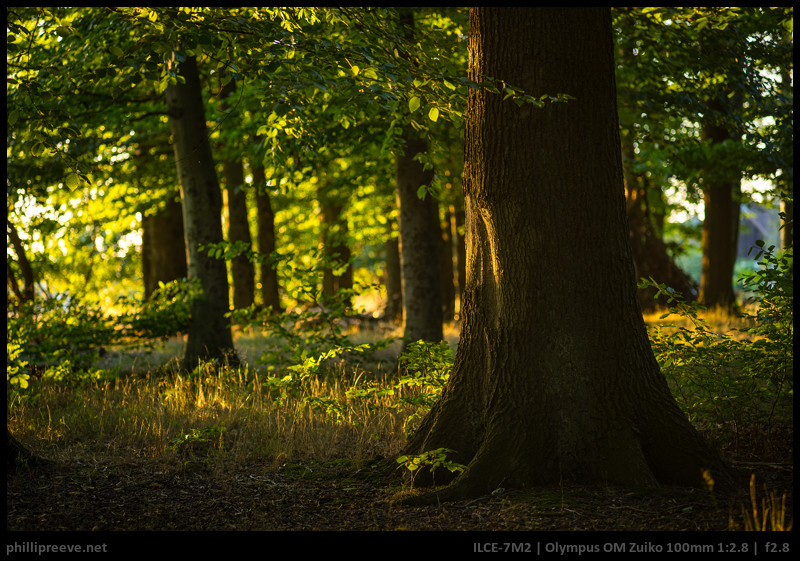
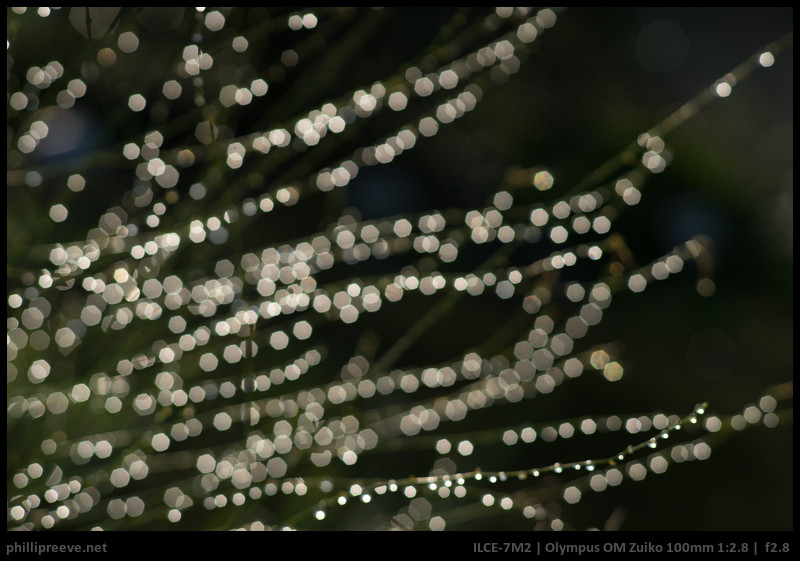
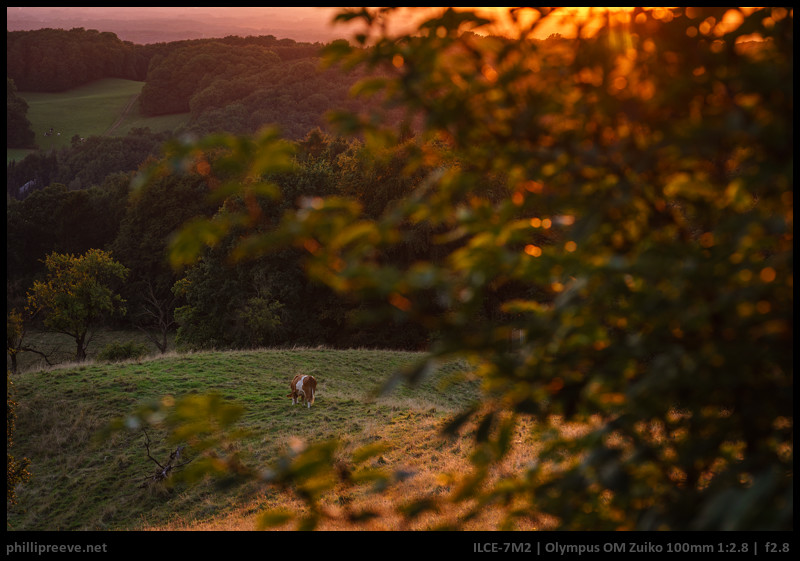
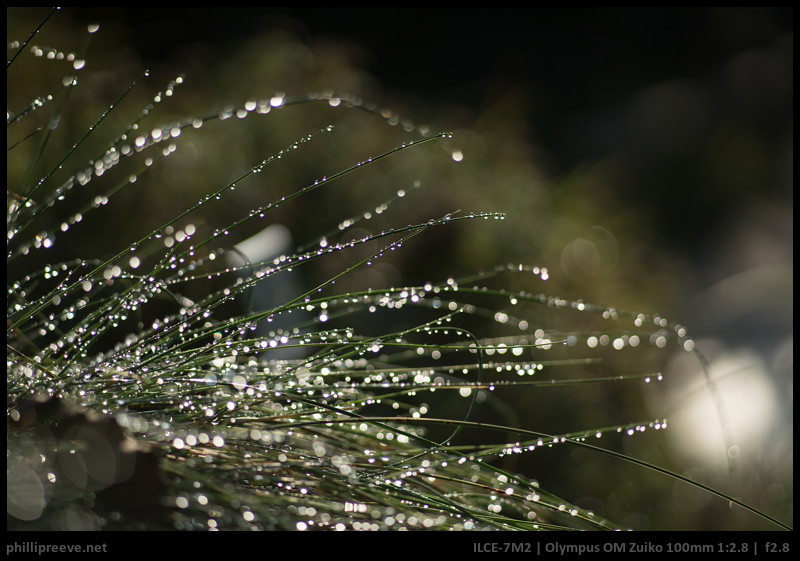
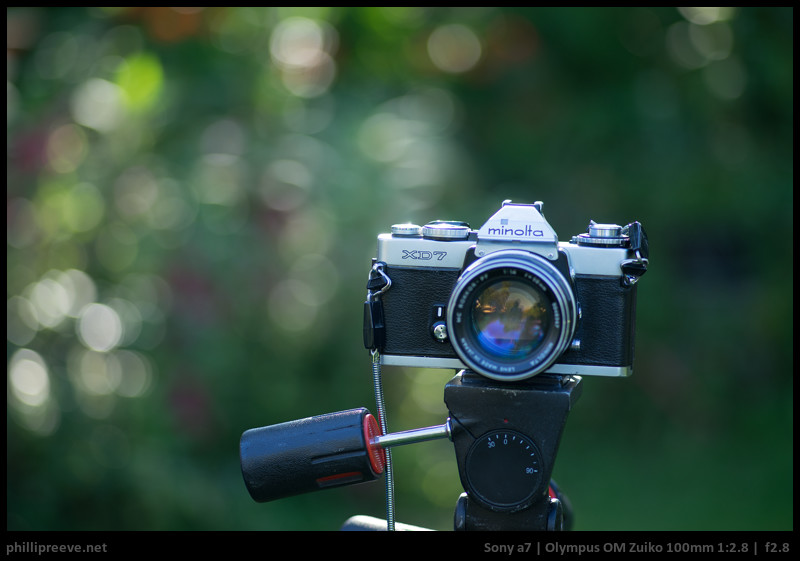
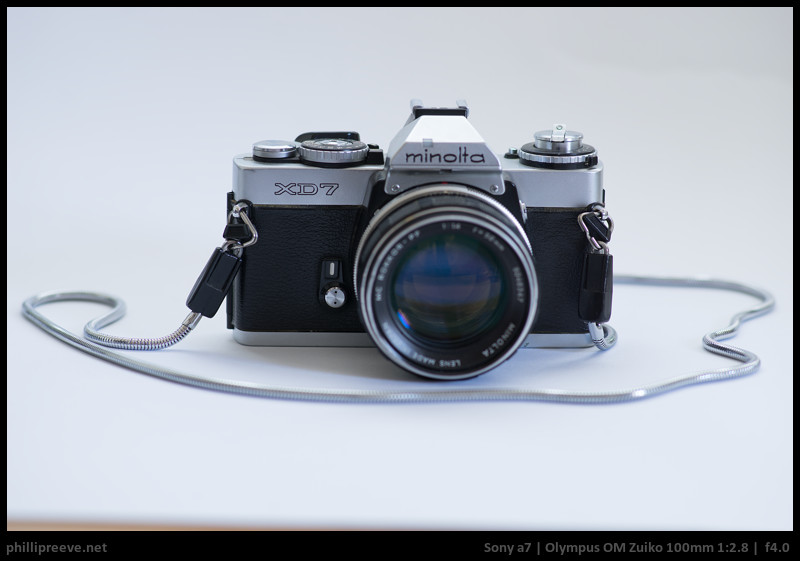
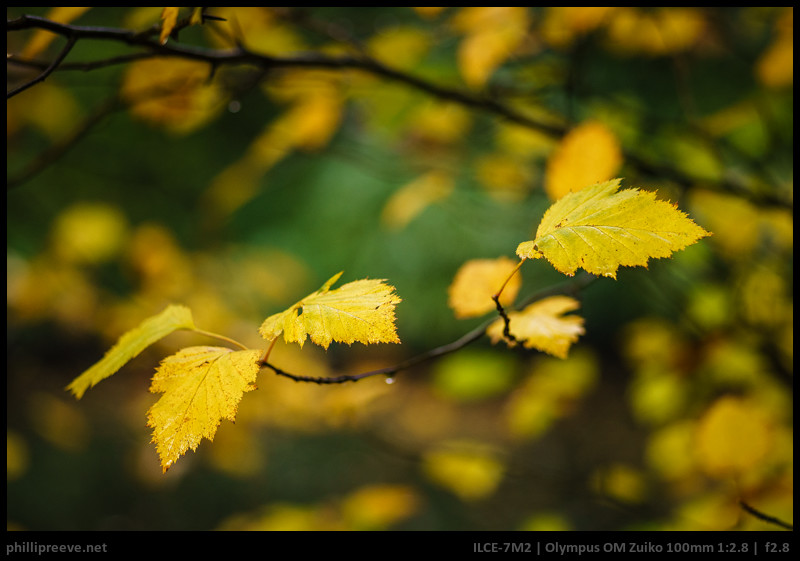
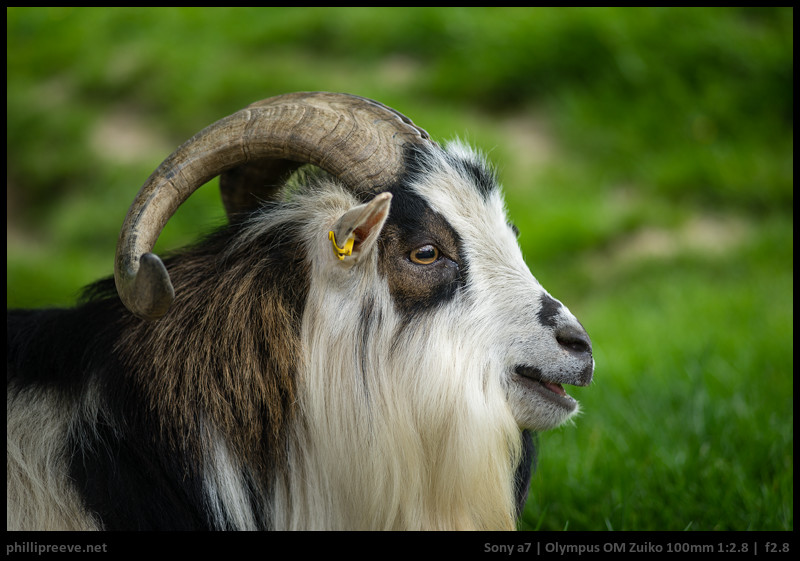
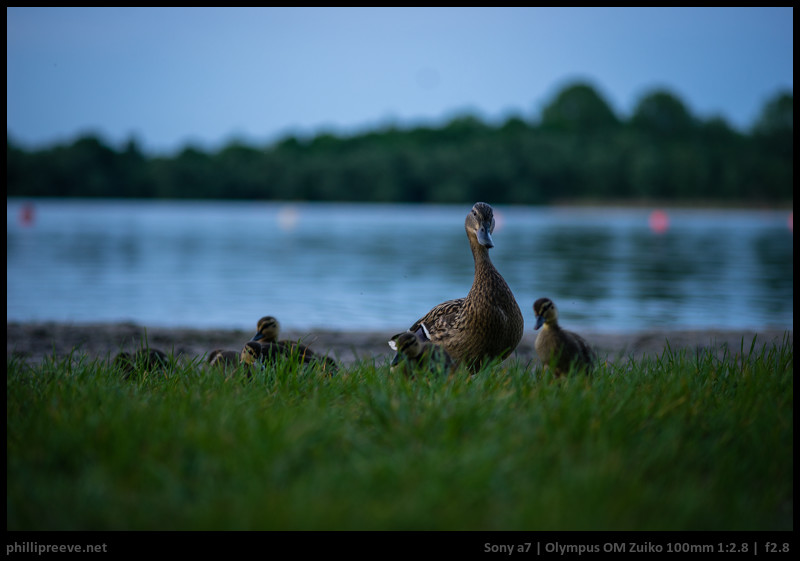
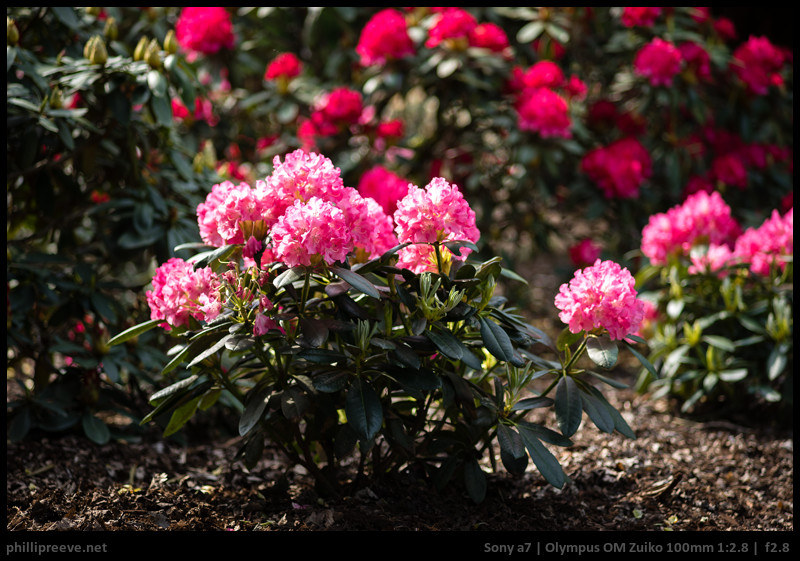
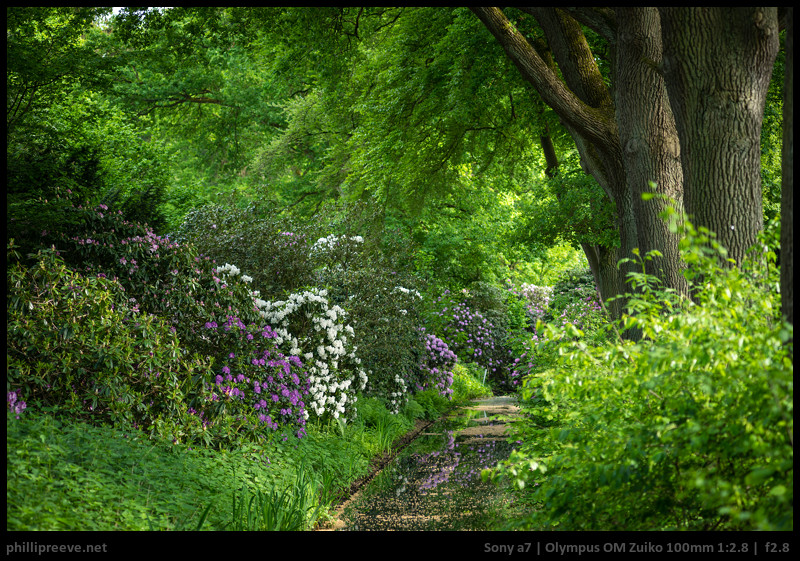
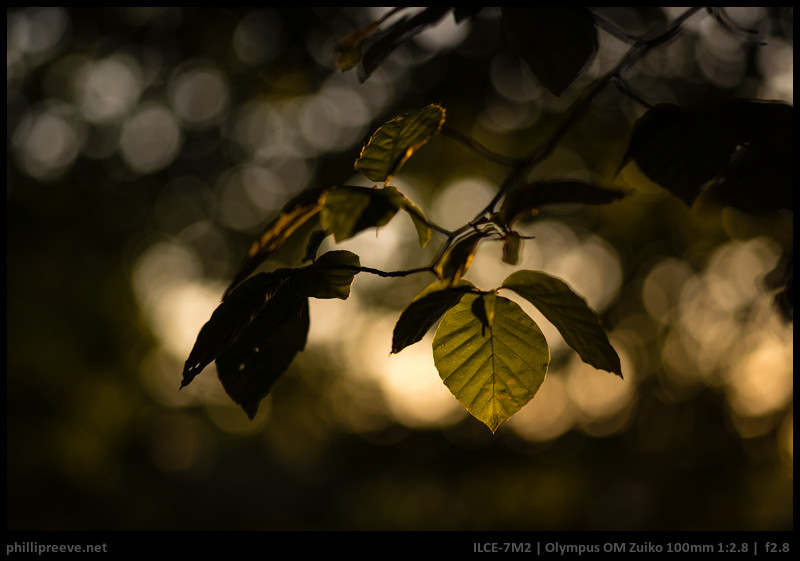
Ah nostalgia; this was my go to lens for light travel with my OMs in the 1980s, better than the 2/85, (though that was incredibly tiny for an f2) but not as good as the much larger and heavier 2/90….
Always interesting how different peoples perspective on lenses is. I ways born in the late 80s and only now discover these lenses
The OM 85/2 mc also has a very good reputation, (a revised design on the earlier sc version, which is less impressive), and is very similar in size and weight to this 100/2.8, at only 60mm wide x 45mm long and 260g, plus a slightly shorter min foc 0.85m and 8 aperture blades!
All this is hearsay though, as I’m still looking for one ;o)
Take a look at Jane Brown’s portraits – The Beatles and other notables from that era – she used the 85mm f2 a lot. I bought one – terrific little lens – but I actually like a little more spherical aberration (‘glow’) wide open and imo this lens is sharper than my ideal wide open – but more forgiving than 90/2 macro. I have found OM lenses to be optimistic on their max aperture designations, i.e., they are something like 1/3 – 1/2 stop slower than Nikon lenses from the same era – at least wide open – you need to adjust shutter speed down to get the same exposure.
Hi Jim, thanks for the tip. To add to your comment (for any readers who don’t already know this), I’d like to mention that the aperture (f-stop) is not a direct measurement of amount of light let in, only a measurement of the physical relationship of entrance pupil to focal length. At identical apertures, two different lenses can permit more or less light to actually hit the recording medium, due to light transmission loss through the glass elements (and maybe other factors?). So the OM lenses are likely accurate in their aperture designations, but an f-stop itself is not a measurement of light transmission. For that you need t-stops, which are used in cine lenses.
The 85/2 was introduced significantly after the break-up of the Beatles.
Could you make a list of your favorite landscape lenses that have the best lens coatings (most flare resistant)?
I was quite impressed by the Pentax SMC 3.5/28, the Zeiss C/Y 1.4/50 and 3.5/100 come to mind as well. Modern lenses are even better, are you interested in them as well?
Thank you! I’m not too interested in modern lenses due to the prices and manual focusing experience. Currently, I’m using the Sony 28-70 kit lens and would like to upgrade. I’m trying to decide between the Zeiss 28mm f2.8 c/y and the Pentax K 28mm f3.5. I’m leaning towards the Zeiss because I can’t find a Pentax in good condition; however, I’m worried about the corner sharpness when stopped down. How would these three lenses compare in terms of corner sharpness and flare resistance? Thanks again for all of your help.
Manual focus experience is awful, but except that, the Sony 2/28 is a great lens for the A7, sharper than any similar vintage one and at least one stop faster.
Hi Phillip,
Any news for any other OM lenses as you promised in the last threads?
Like 35mm 2.0 or 2.8 , 24 mm , and the 85 mm 2.0 ? Would be cool to get your opinion and results. Best Andy
I don’t think that I promised any dates but the OM MC 2/28 will be one of the next reviews.
Perfect !!
Have you tried the Olympus 90mm f2 Macro? I have it and wonder how it performs on the A7 series.
No I haven’t but I would like to. The MTF Diagram looks quite good though: http://www.photodo.com/lens/Olympus-90mm-f2-Macro-165/images
Really liking the rendering of the Canon FD 100/2. I know you reviewed that lens – any sense of how the two might compare?
Actually I didn’t. But from the sharpness tests I have seen I would think it outperforms the tiny Olympus.
Nice review on the OM 100/2.8. I just bought an OM MC 135mm/2.8 over a Minolta MD, a Takumar and a Canon FD of the same focal length and aperture. Merely because of its small solid feel and maybe its cosmetically look newer than the others. And comes with its original box with a tiny cute handle.
Please tell me that I made the right choice…. Hahaha…
Otherwise, do u have other links that has a showdown between these few lenses? I know 135/2.8 was a competition between many brands at that time.
I have never used the OM 2.8/135.
135/2.8 has better bokeh, more background blur, less CA but wide open, but is a bit less sharp in the center than a 100/2.8.
Judging by IQ only, 135/2.8 is clearly better of the two as a dedicated portrait lens, but 100/2.8 is amazingly small and light with a more versatile focal length.
In the end I always took a 100/2.8 with me and will sell 135/2.8 due to a lack of use.
hello I think your job is great. How do you achieve such sharp images?
With some experience it isn‘t too hard: Just make sure focus is on the spot and the shutter speed appropiate.
how is the performance compare with contax G90? i really need a tiny and light tele lens for days trekking!
G90 is a little sharper with higher contrast. OM is nicer to use.
Always like to read your review. I love Zuiko lens. Question: how would it compare to Nikkor 105/2.5 (apart from the warmer tone from Zuiko lens vs coller from Nikkor)
I already have the Nikkor and love it so thinking that maybe not necessary for me to get one?
I never used the Nikon so I don‘t have a good basis for an answer to your question.
Alright, thx. You should 😉 as much as my love goes for Zuiko, the 105/2.5 is really a gem 💙
I am currently in the process of upgrading my OM lenses.
I already have a pretty good collection of Nikon lenses, but my Oly section is a bit thin. When looking for a solid portrait lens I first stumbled over the 100 f/2. And immediately discarded it after reading about it some more. Price is only one option.
The other for me is the filter size. For a very simple reason: I might not be the intended target of http://www.phillipreeve.net, because I do own a Sony A7RII and vintage lens adaptors for it, but I have stopped using it for photography a year or two ago. 90 % of the time I grab either a Nikon F2 or an Olympus OM-4 and load some oldfashioned Ilford FP4/HP5 black and white film – the Sony in combination with a modern Sigma 105 Macro has been “demoted” to a film negative scanner.
I love the old OM system because of the tiny size and low weight of really professional film cameras and lenses (and the Nikon F2 for the exact opposite, the heftiness and solidity and of course the satisfying CLONK it makes when you push the shutter). And shooting mostly BW film, I do need color filters almost all the time. So any system I would consider needs to be limited to a single filter size.
I assume my considerations are not relevant for any vintage-on-digital shooter who probably will not use filters that often. Still I never have and never will buy a Nikkor AI/AIS with any other filter size than 52 mm or an Olympus OM with any other filter size than 49 mm. The better image performance of the larger 100 f/2 would not be worth the hassle of carrying three of four filters in two sizes all the time.
All of that being said, people: Shoot more film guys!
Everyone is welcome here 🙂
Thorsten, what lens did you choose as the portrait lens for your om4? I am faced with the same choice.